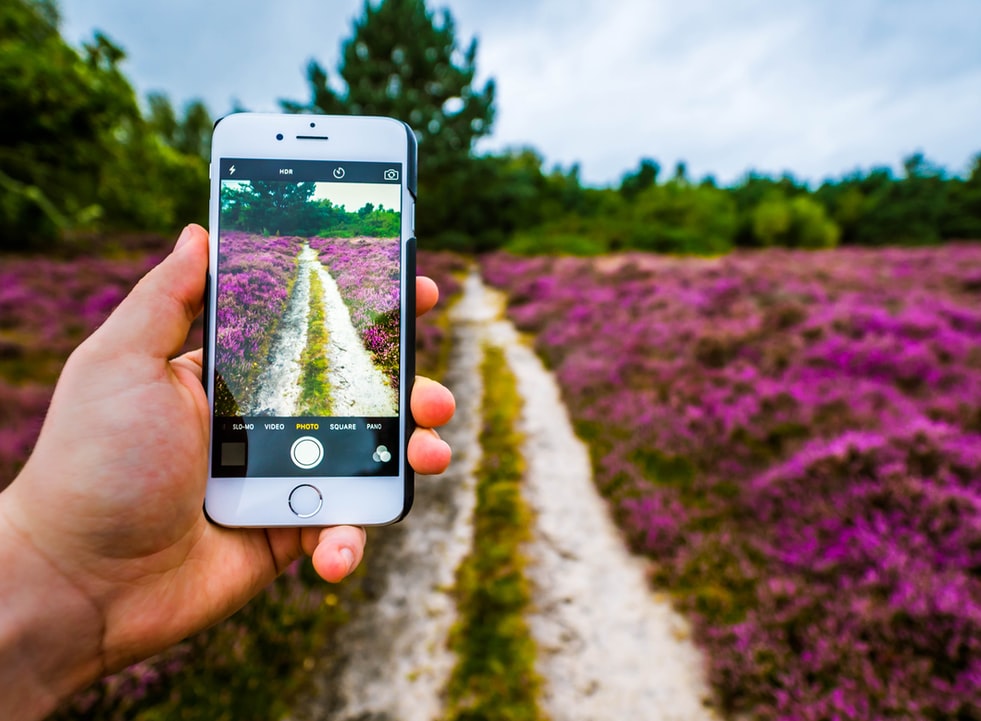Display advertising is yet another component of digital marketing. It’s one of those things that we see wherever we go online but rarely think about it from the digital marketing perspective. There are a lot of benefits to display advertising but knowing if it’s right for your guiding company really comes down to your goals, budget, and the time you have to dedicate to running a smooth display ad campaign.
Table Of Contents
Which Is Best For Your Business?
Display Advertising Best Practices
Display Advertising Courses Online
In this post, we’re going to cover what exactly is display advertising, different types and formats, if it’s best for your guiding business (compared to search advertising), some of what Google suggests in creating an ideal display ad, and finally, some courses you can look into should you want to learn more about it.
What Is Display Advertising
Digital display advertising is a promotional and visual graphic placed on websites, apps, or social media platforms in a variety of different forms in order to increase brand awareness as well as drive users to a landing page.
These ads can appear at the top, on the side, or in the middle of web content. They’re also known for their effectiveness because of how visually appealing and more dynamic they are (if done right). You can use a mix of text and images as well as video for a display ad.
Types Of Display Advertising
There are several types of display advertising which we cover below. It’s important to know the difference between, say, traditional ads and retargeting ads.
Traditional (Banner) Display Ads
This is the most popular type of display advertising. It’s a rectangular, image-based display, situated on the top, to the side, or in the middle of content. This ad promotes the brand and/or has a call-to-action to get visitors to click on the ad and come to their website.
Responsive Display Ads
A responsive display ad automatically adjusts size, appearance, and format of an ad depending on the site on the Google Display Network.
Retargeting Display Ads
Retargeting is when a display ad is shown to a visitor who came to your website but left without booking a reservation with you. It’s done with the help of tracking pixels or cookies that follow the visitor after they leave your site.
AdRoll, for instance, is mostly used for retargeting on Google, Facebook, Instagram, and 500+ networks. AdRoll says, “Retargeting enables you to remind your customers of your products and services after they leave your website without buying. It allows you to show your visitors relevant ads when they visit other sites. Retargeting works with apps and search as well as website banner ads.”
Native Ads
Another way to look at native ads is that it’s paid content. Native ads are difficult to spot because they’re supposed to “blend in” with organic content.
Social Ads
Social advertising is another type of digital display advertising but is located on social media platforms.
Facebook Ads
Facebook Ads “are paid messages from businesses that are written in their voice and help reach the people who matter most to them.” Also, you can advertise on Instagram from the Facebook Ads Manager.
Like Google, you can create campaigns for specific goals using custom text, images, and an audience.
Here’s a screenshot of two ads on Facebook. One is directly in the feed and the second is in the right column at the top.
Pinterest “ads are regular Pins that you pay to be placed where people are most likely to see them. These Pins will surface in your desired audience’s home feed, category feeds, and relevant search results.”
There are a number of platforms that you can pay to display your advertisements to your ideal audience. The platform(s) you choose depend on your goals and where your audience is. As an adventure guide in the tourism industry, it’s unlikely you’ll place an ad on LinkedIn or Amazon.
On the other hand, people searching for things to do in a location, will likely be on a social media platform like Facebook, Instagram, or Pinterest as well as a search engine platform like Google or Bing.
Display Advertising Formats
Among the types of display ads, there are also varying formats from which to choose when creating a display advertising campaign. Everything from static ads to 360- degree video ads are available to marketers and business owners. Learn more about each one.
Static Banner Ads
As we mentioned above, these are the most often used formats for display advertising. They typically have image, text, and a call-to-action. It’s a picture that doesn’t move, essentially.
Animated Ads
Animated ads have an animated visual component to them. They are much more eye-catching than a static banner ad. This helps draw attention.
Interactive Ads
Knowing that users tend to skip ads, use ad blockers, or pay for a premium service to avoid seeing ads altogether, advertisers are leaning more towards interactive ads that get users to actively engage with the ad.
Video Ads
There are two ways to look at this. First, video ads can be as it sounds, ads that are videos. Second, it can refer to ads that show before, during, or after a video.
Expandable Ads
Expandable ads can start as one, smaller size, and then when clicked (or automatically triggered), expands to a larger size.
Interstitial Ads
Instapage defines interstitial ads as “Interactive, full-screen ads that cover the interface of their host app or site. These ads appear between content, so they place at natural transition points or breaks, such as in between activities or game levels. Their full-coverage is what differentiates them from other ad types, like pop-up, native, and banner ads.”
360-Degree Video Ads
According to Social Media Examiner, 360-degree video ads “are clips displaying a spherical scenario where the camera has recorded all possible angles of the environment.”
Which Is Best For Your Business?
It’s imperative to know which kind of advertising works best for your tour guiding business. We’ve previously covered search advertising and if it’s worth it for adventure tour guides so make sure to read that article too as you weigh the pros and cons of display advertising and search advertising.
Display Advertising
Push Approach
The biggest difference between display advertising and search advertising is that display is a “push approach.” In other words, a display ad pushes your brand in front of customers and creates a demand for your service.
Customers won’t typically know who you are already or what your guiding business does. They may not even realize they want to go on an outdoor adventure. Using a display ad would create that awareness and potentially lead customers to your site to book a guided tour with you.
Visual
Display ads are more visual, so if your guiding business relies on pictures and videos, you can create graphics through here. We think most guiding services likely fall into this category. People want to see whitewater rafting – not just read about it.
Build Brand Awareness
If you’re unknown and you want to create a demand for your service, then using display could prove beneficial. When your ideal customer is browsing a website and they see your ad, they become aware you exist. Before, they didn’t. This is a quicker way to build brand awareness than word-of-mouth.
Longer Sales Cycle
Companies with longer sales cycles will opt to use display advertising instead of search advertising. This is because display advertising takes longer to generate sales. Guiding services don’t typically have a long sales cycle because this would mean customers have to do a lot of research, could take weeks or months before purchasing, and there’s usually a trial period before purchasing.
Search Advertising
Pull Approach
Opposite display advertising, search advertising uses a “pull approach.” This simply means that search advertising pulls customers in who are actively searching for a resolution to their problem. In this case, someone could be searching for whitewater rafting guides and if you’re using search advertising, your advertisement would pop up.
The pull approach is answering the demand, rather than creating demand, like display advertising.
Short Term Strategy
Search advertising is a short-term strategy in that you’re looking for quick results and bookings. This makes a lot of sense for guides as most outdoor guiding companies are seasonal.
Shorter Sales Cycle
This also falls more in line with guiding services. For instance, customers are looking for lower prices, it’s a low stake investment (compared to finding a new software), you’re not calling prospects, and lead generation is usually automated through your website.
Things to Consider
Search Volume
Use Google Keyword Planner to see how much volume is behind search terms with relation to your company and what you offer. If there’s little search volume, then Display makes sense because it’ll grow brand awareness.
This means, there will be more display ads on sites your ideal customer is on already and they’ll see your name more often. If there’s high volume, it makes sense to use PPC advertising.
Budget
If you have a tight budget, using search ads are a better option as this will get you faster results for less money. Building your brand with display advertising takes a lot longer which means a bigger budget for the long-term. If you have the budget, both PPC and display would be the optimal choice.
Where are they in the marketing funnel?
If your ideal customer is looking for rafting guides for an upcoming trip or they’re on a travel blog planning for a vacation, then seeing your display ad could make them click on it.
Alternatively, if they’re simply reading a blog post because they’re interested in travel, they may not click on your display ad if they aren’t currently in the market for a river rafting guide.
Display Advertising Best Practices
If you decide to start using display advertising, Google tells you exactly how you should create an ideal display ad:
Use Responsive Ads
We described responsive ads up above. Google automatically resizes your ad depending on the available ad space and device. This frees up a lot of your time because you won’t have to create several different ads for different sizes.
Optimize Images And Brand Logo
You want your graphics to be clear, simple, and high-quality. Google says to “Avoid overlaid text, collages, and excessive blank space.”
Use Clear And Compelling Headlines And Text
Google recommends writing copy that is clear and drives action from your customer(s). If writing doesn’t come naturally to you, ask someone at your company to help out.
Include Prices, Promotions, And Exclusives
Everyone loves a good deal so including any sort of promotions or discounts will help drive customers to your site.
Relevant Landing Page
A landing page is the website page you send customers to when they click on your ad. This page should be relevant to the ad you’ve created. Additionally, it’s important to have a site that can take online bookings. Make sure your booking is streamlined and simple for a customer to reserve a guided trip with you.
Display Advertising Courses Online
“How to build awareness and drive action for your brand by building, managing and optimising visual ad campaigns that engage your audiences. You’ll also learn how to grow your campaign reach – and track performance – using Google Display Audiences and Performance Planner.”
“Learn how to set up and manage ad campaigns for your business using Facebook Ads Manager.”
This post is part of our Digital Marketing Series:
Intro To Digital Marketing For Professional Adventure Guiding Services
Why The Stages Of The Buyer’s Journey Matter For Adventure Tourism
An Introduction to Tourism SEO For Outdoor Guides
Is Paid Search Worth It For Adventure Tour Guides?
Is Display Advertising Useful For Your Adventure Guiding Company?
4 Advantages Of Content Marketing For Adventure Guides
Can Social Media Marketing Help Grow Your Adventure Guiding Business?
Email Marketing For Adventure Guides In 5 Easy Steps
Or download our free Digital Marketing Ebook created specifically for outdoor guides.








